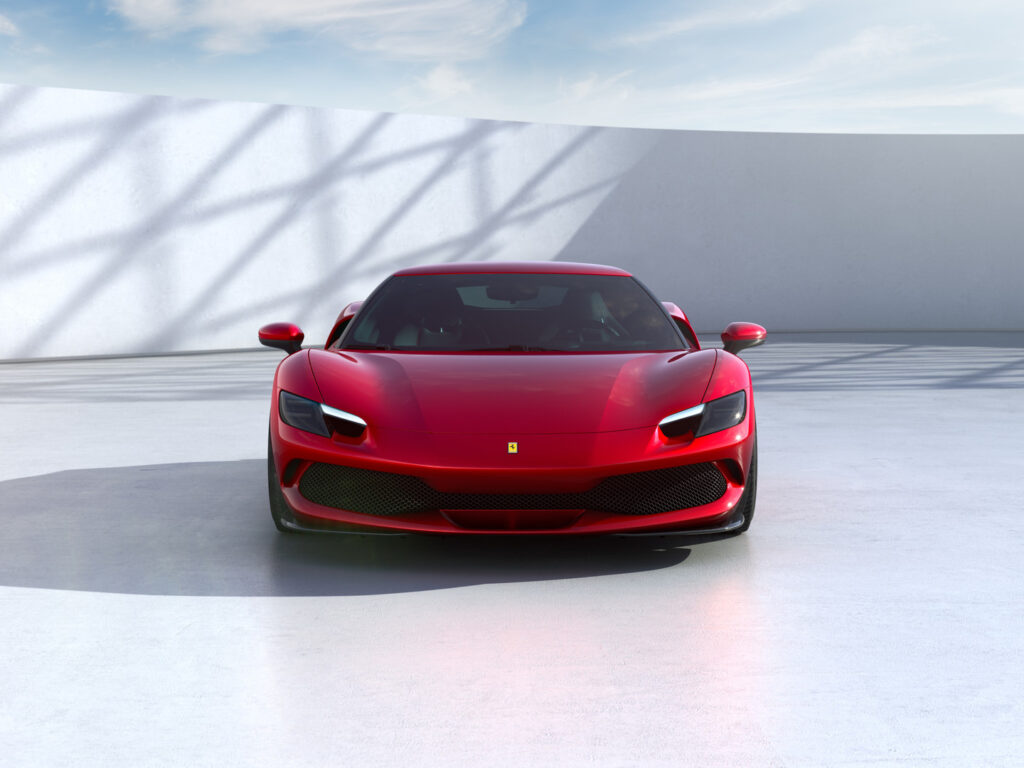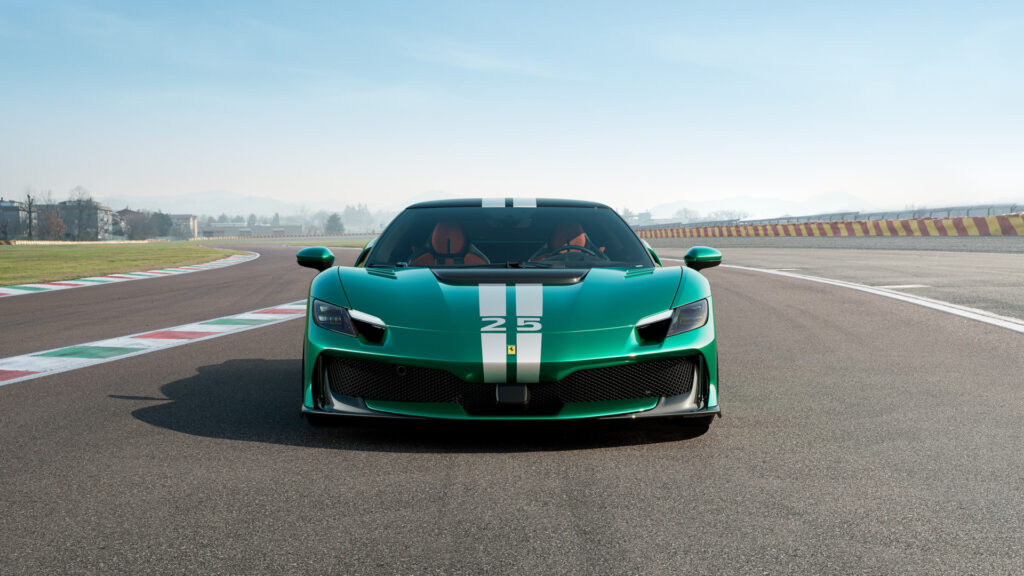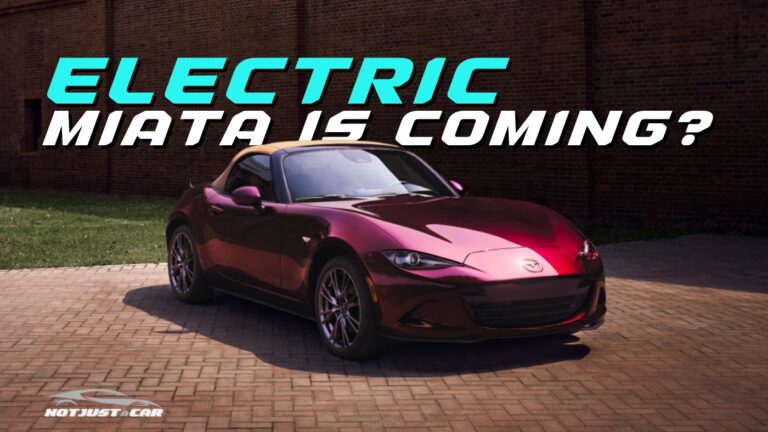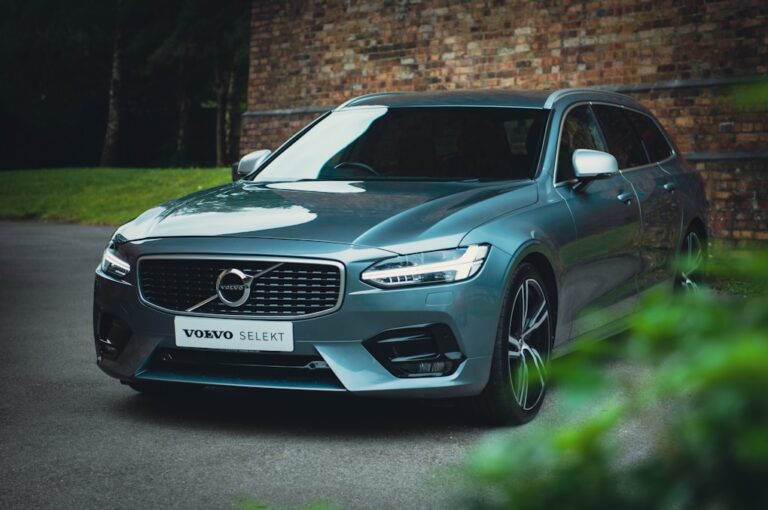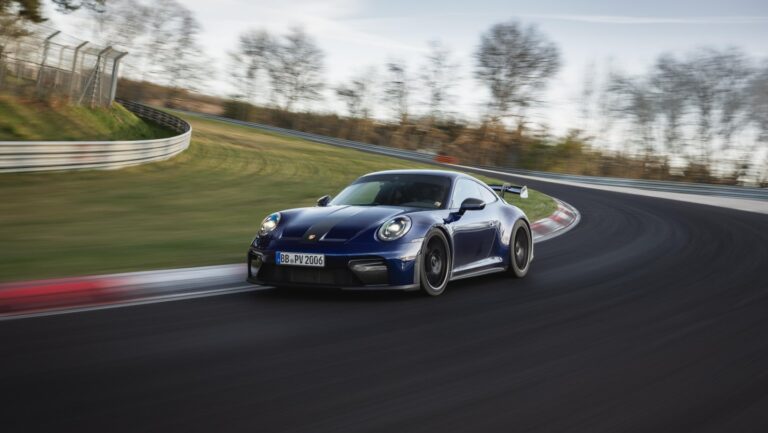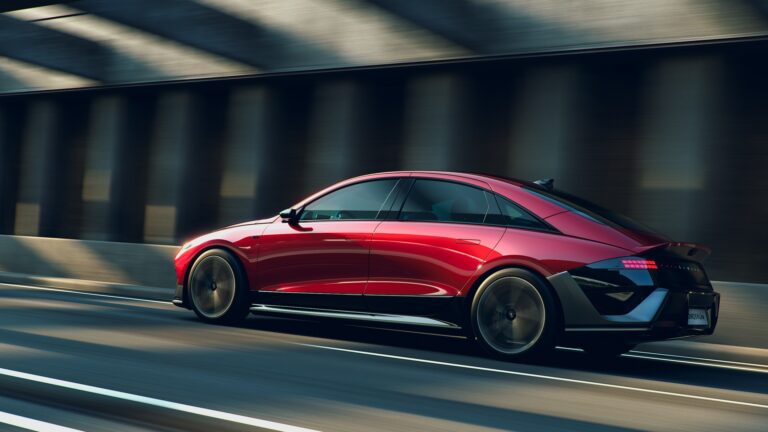Ferrari 296 Speciale: Sorting Facts from Hype

The new Ferrari 296 Speciale has finally broken cover, and the first question that popped into my head was simple: is this thing really bound for “future-classic” status, or is the standard 296 GTB still the smarter buy?
Let’s find out…
Quick Links
Ferrari 296 Speciale – Executive Summary
The Ferrari’s 296 Speciale turns the GTB’s already heady recipe up to 11:
- Power rises from 819 hp to 868 hp thanks to revised turbos, hotter injection pressure, and tweaked hybrid calibration.
- Weight falls 60 kg (132 lb) to a 1,410 kg dry figure through carbon-skin body panels, thinner glazing, and a cockpit diet.
- Downforce climbs 20 percent, to 435 kg at 250 km/h, thanks to a fixed rear wing, new splitter, and under-floor aero trickery.
- Performance improves just enough to matter on track (0–100 km/h in 2.8 s and a Fiorano lap in 1:19.0, two seconds quicker than a GTB).
- The privilege costs roughly $104,000 (≈ €92,000) more than a base GTB if you’re speccing both cars in standard colours with no extras.
On paper the numbers check out, but the bigger story lives in the nuance: production limits, collector appetite for a hybrid V-6, and whether the Speciale’s seat-of-the-pants feel really distances it from the already-excellent GTB.
What Makes a “Speciale” and Does The 296 Qualify?
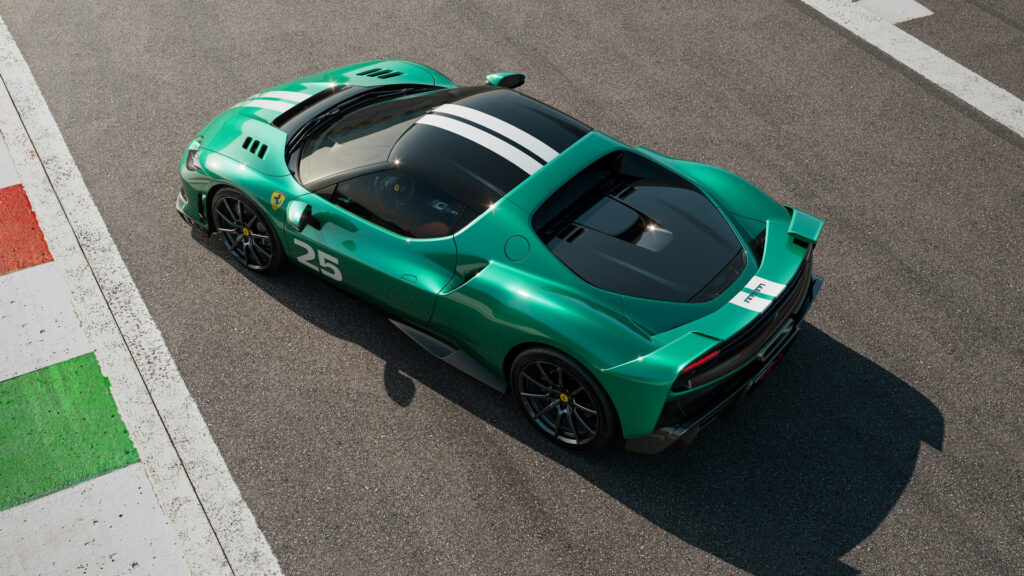
Ferrari’s Speciale, Scuderia, CS, and tdf badges have historically meant three things: more power, less weight, and extra aero. The 296 Speciale checks those boxes faithfully, without dipping into unverified wizardry.
Powertrain
Under the glass lives the same 120-degree 3.0-litre V-6, still red-lining at 8,500 rpm. The uprated figure comes from:
- Larger compressor wheels inside the twin turbos.
- Reprofiled turbine shafts (a titanium–aluminium alloy that spins up faster).
- Higher-pressure injection allowing more aggressive timing.
- Re-mapped 167-hp e-motor that fills torque above 200 km/h instead of throttling back.
There’s no change to battery capacity (7.45 kWh), no extra electric ponies beyond the calibration tweak, and Ferrari’s official literature confirms the full-electric eDrive mode remains, though it’s disabled when you select the new “Speciale” calibration within the manettino.
Weight Reduction
Ferrari lists a precise 60 kg dry-weight saving over the GTB, broken down as follows:
- Carbon-skin doors & front bonnet: –26 kg
- Polycarbonate rear screen & side windows: –14 kg
- Lightweight interior trim, carpets, and sound deadening delete: –12 kg
- Cast-titanium exhaust back-section: –8 kg
No mystery magnesium wheels, no “ghost” options, the 60 kg headline number is attainable on every Speciale that leaves Maranello because the parts are standard fit.
Aero Package
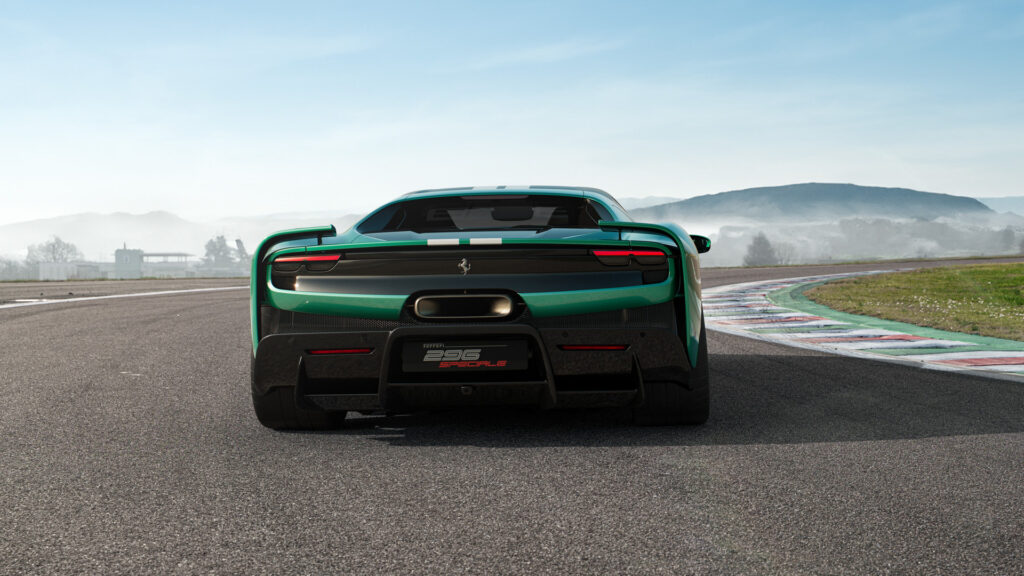
The Speciale sticks a 150-mm-tall fixed wing where the GTB runs an active flap. Pair that with a reshaped splitter and a triple-element diffuser, and you net an additional 75 kg of stick at 250 km/h. Ferrari’s CFD notes peg 30 kg of that gain to the new under-floor vortex generators, tiny vertical vanes that energise the airflow before it hits the diffuser.
Chassis & Controls
Ferrari confirms retuned magnetorheological dampers (not Multimatic spool-valves — those are reserved for the Assetto Fiorano GTB). Spring and bar rates match GTB baseline; the extra body control comes from aero and lighter mass. Side-Slip Control evolves to version 8.0 “Speciale,” allowing a fraction more yaw before cutting spark. Crucially, Ferrari does not publish a new steering ratio, so we’ll leave the 12.5:1 claim on the shelf until the factory says otherwise.
Ferrari 296 GTB vs Speciale Deep-Dive
| Component | 296 GTB | 296 Speciale | Δ |
| Total system power | 819 hp (830 CV) | 868 hp | +49 hp |
| Peak torque | 740 Nm | 850 Nm | +110 Nm |
| Dry weight | 1,470 kg | 1,410 kg | –60 kg |
| 0–100 km/h | 2.9 s | 2.8 s | –0.1 s |
| Downforce @ 250 km/h | 360 kg | 435 kg | +75 kg |
| Fiorano lap | 1:21.0 | 1:19.0 | –2.0 s |
| Base price (Italy) | ≈ €357,000 | ≈ €449,000 | +€92,000 |
| Base price (US) | ≈ $345,000 | ≈ $449,000 | +$104,000 |
All figures pulled directly from Ferrari’s official technical release and price lists current as of April 2025; currency conversions use the European Central Bank’s April-end reference rate.
How the 296 Speciale Feels, Based on Official Data and Early Seat Time
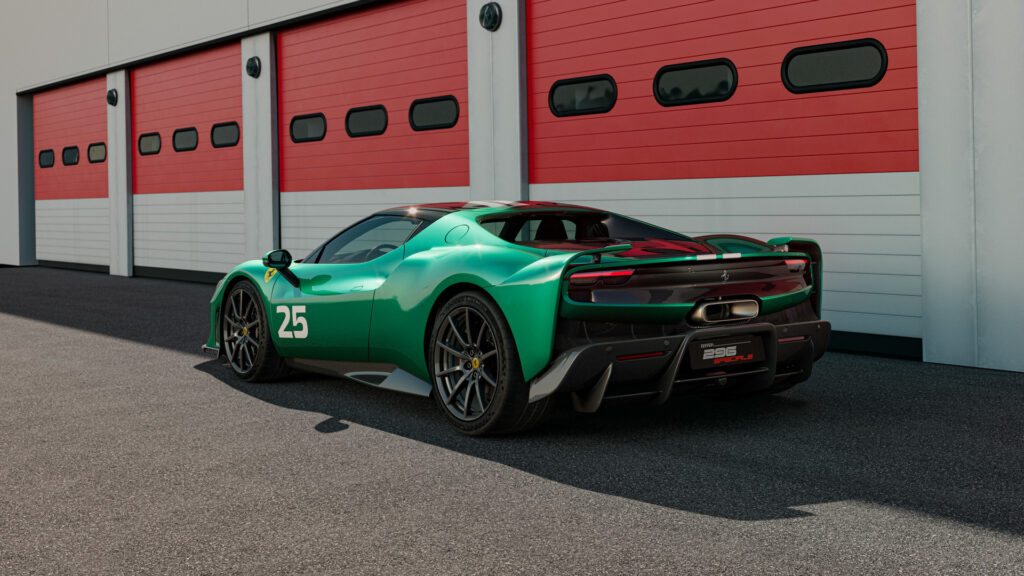
Ferrari allowed a handful of outlets a pre-production taste at Fiorano, and the consensus gels neatly with the numbers:
- Throttle Response – The turbos spool harder but, thanks to that e-motor, lag is basically absent below 3,000 rpm.
- Balance – Removing 60 kg, most of it aft of the firewall, lets the car rotate sooner. Drivers report less initial understeer than the GTB.
- Brakes – Same CCM-R rotors as GTB, but a fresh brake-by-wire map harvests 10 percent more regen on corner entry, then hands over to friction earlier to shorten pedal travel.
- NVH – Louder cabin, less insulation, and that titanium exhaust combine for a sharper edge; Ferrari claims a 6-dB increase under full load.
Is it night-and-day over a GTB? Probably not if your driving diet is 50-mph cruise and coffee runs. On a circuit, two seconds at Fiorano is real money.
Is the Extra $104K Actually Worth It?
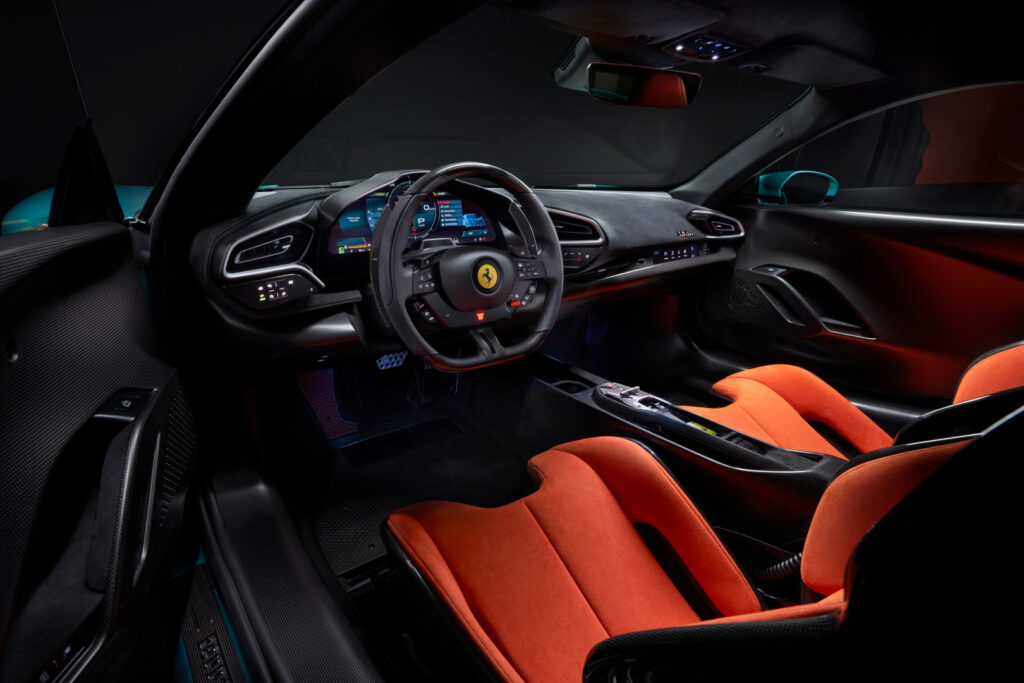
Let’s do the cold math first. Tick the Assetto Fiorano package, carbon rims, and a bespoke colour on a GTB and you’re well past $430K before delivery fees. The Speciale bundles its weight-loss pieces, aero kit, and cal-specific ECS software at $449K flat. If track days or lap times are your jam, the delta is rational. For road-only buyers the equation is murkier. The GTB rides marginally softer and lets you ghost through town on pure EV up to 25 km.
Will the Ferrari 296 Speciale Be a Future Classic?
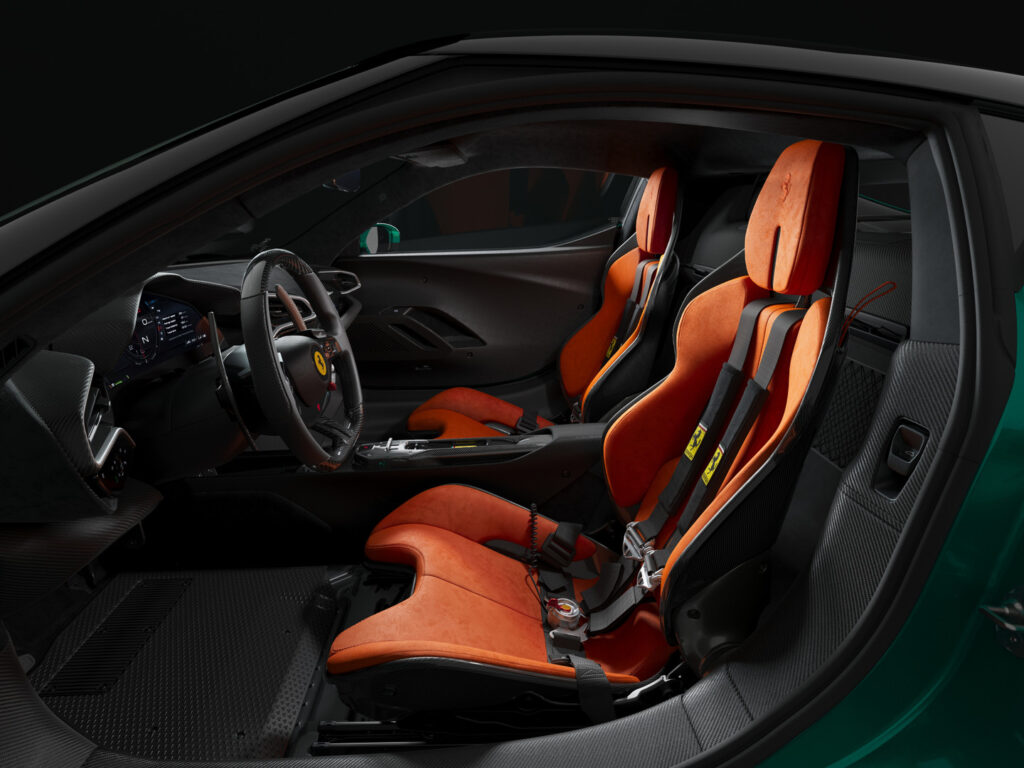
History says every Speciale/Scuderia/Stradale eventually outpaces its base-car sibling in the auction room. But two caveats hover over the 296 variant:
- Production Window, Not Numbered Run – Ferrari calls the car “time-limited,” not unit-limited. The rumour mill suggests 1,800–2,000 cars (close to 458 Speciale output), but without a hard cap collectors will take a wait-and-see stance.
- Hybrid + V-6 Narrative – Some purists still equate cylinder count with soul. Yet the original Dino ended up a legend after buyers got over its V-6 scepticism. If synthetic fuels keep ICE alive, the Speciale’s combo of V-6 howl and electric shove may age better than people think.
The positives are strong: meaningful performance bump, visible aero differentiators, and the honour of being the first Speciale of Ferrari’s hybrid era. That alone could cement landmark status once the brand pivots fully to electrification post-2030.
Verdict: My Straight Take
Big disclaimer: I’m nowhere close enough to owning a Ferrari, so take my verdict with a pinch of salt, however here’s my view on this Speciale: If your vision of a Ferrari involves maximum feedback, a willingness to sacrifice some ride plushness, and the bragging rights of the sharpest tool in Maranello’s shed, the 296 Speciale is the one you want. It’s measurably faster, tangibly lighter, and visually more purposeful than the GTB, and all of that is signed off by Ferrari’s own numbers, not marketing fluff. Will it mirror the 458 Speciale’s meteoric rise? I don’t think so, I mean it’s possible, but don’t bank on it until we have concrete production figures and a few years of market data. What is certain right now: on track the Speciale earns its name; on the street the GTB remains the sweeter all-rounder. Choose accordingly, and maybe keep a Dino price chart handy when you do.

